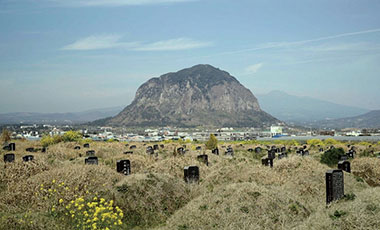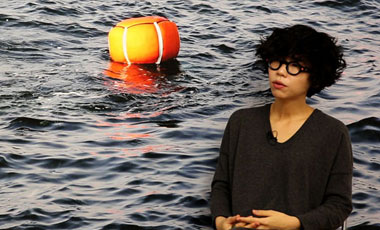TheArtro introduces young Korean artists who garnered international attention at the 2016 Gwangju Bienniale, Busan Biennale, and Mediacity Seoul. During the summer camp organized as part of Mediacity Seoul 2016, Choi Taeyoon led a workshop titled Uncertainty School. Choi is an activist artist who has showcased a wide range of public projects in New York City and Seoul. By exploring the meaning of technology in contemporary society, and sharing technology through education, Choi seeks new ways for art to intervene in society.
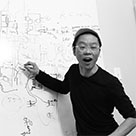
- Taeyoon Choi / artist Taeyoon Choi (b.1982) lives and works in New York and Seoul. Choi holds a B.F.A. from the School of the Art Institute of Chicago and a M.S. from the Korea Advanced Institute of Science and Technology. His solo exhibitions include “Speakers Corners” (Eyebeam Art and Technology Center, NY, 2012); “My friends, there is no friend” (Spanien 13c, Aarhus, Denmark, 2011); and “When Technology Fails, Reality Revails” (Art Space Hue, Seoul, 2007). He has also participated in SeMA Biennale Mediacity Seoul (Seoul Museum of Art, Seoul, 2016), “Anti-Manifesto”, Shanghai Biennale (Daejon Pavilion, Shanghai, China, 2012) and “Codes of Contingency” (319 Scholes, NY, 2012). Choi curated “Resistance and Resilience” at Usdan Gallery (Bennington College, Vermont, 2012) and directed ‘Making Lab’ at Anyang Public Art Project (Anyang, South Korea, 2013). He also co-founded the ‘School for Poetic Computation'(2013) where he continues to organize and teach.ta
Poetic Exploration of Technology
Taeyoon Choi, a media artist, educator, and activist based in New York and Seoul, is a cofounder of the ‘School of Poetic Computation’ in New York City, where he explores the relationships between technology and art. He teaches and writes about cities, technology, and political possibilities. He is currently collaborating with fellow artists and activists to challenge the notion of disability and learning.
As an artist, educator, writer, and activist, you are involved in a greater range of activities than a typical artist. How do these various roles connect? Is there an attitude that encompasses them all?
I am basically a visual artist. However, to me, art, teaching, and social movement (activism) are not separate. All three are equally important. I consider the act of teaching and making a school as well as its framework to be a point at which art and activism intersect, the structure that most effectively links the two. The different roles I play, collectively form my practice and action. I think it is as important for an artist to construct the context of their own practice as it is to be recognized within the art world. My preference for a Do-It-Yourself style of practice is grounded in personal experiences after the attacks in September 11, 2001, which occurred while I was attending college in the United States. Participating in the numerous anti-war protests that followed, I became involved in the formation of alternative spaces and collectives. Some people consider activist art a mere knee-jerk reaction to a specific issue. I believe that art is a way of life marked by ongoing participation and work for social justice. In performing the three roles, the most important questions to ask are, “Who is this action for?” and “Who needs me the most?” The answer is always friends. Here, a friend can be understood as a metaphor for a community whose members form a supportive structure for one another as they share a feeling of solidarity. I contemplated on activities that can be shared among friends and my work takes many possible formats. Thus, I draw, write, build electric circuits, program computer software, plan exhibitions and performances, and organize a teaching and learning space.
 Taeyoon Choi and Christine Sun Kim, ‘Incomplete Text,’ 2015, Metronomes, sensors, microcontrollers, selfie-sticks, Performance at The Whitney Museum of American Art, June 22, 2015.
Taeyoon Choi and Christine Sun Kim, ‘Incomplete Text,’ 2015, Metronomes, sensors, microcontrollers, selfie-sticks, Performance at The Whitney Museum of American Art, June 22, 2015. After each project, you have not only written complete books, including Urban Programming 101: Stage Directions, Anti-Manifesto, and Road Show: South Korea—you have also worked on other lengthy pieces of writing. They can be used as guidelines, because you detail the processes and challenges of your actions. I find your method very interesting. Do you have a reason for going through these laborious steps?
I like to read and write. I am fascinated by the process of weaving a piece of writing. I think that my writing is like a recipe for a dish. It is a recipe for an activity. When others apply it to their work, I see it and am influenced by it in turn. Seeing others utilize ideas and technology that I have created makes me very happy. Because much of my work is immaterial, it is important to record the process thoroughly. I value recording moments of my work and spill my emotions, as though writing to a friend.
From ‘Uncertainty School’ (SeMA Biennale Mediacity Seoul, 2016) to ‘Making Lab’ (Anyang Public Art Project, 2014) and ‘School of Poetic Computation’, your work is educational in character. Its overall form encompasses education, daily life, research, and art. Is this related to your vision of community?
Community is important to me. Friends are a small form of community. I have always been quite interested in the commons. Isn’t the commons necessary for a community to exist? These days, I sense keenly the isolation caused by capitalism. When I see people playing on their smartphones or talking on the phone at a park or the beach, I think about how lonely people appear despite the abundance of technology that supposedly connects them. Approaching technology from the perspective of anti-capitalism is to transform it into a communal property. By doing this, I hope to see isolated individuals become a temporary community. If even a small number of people who recognize the necessity of community come together, this temporary structure can become a sturdier social structure. I think people will be happier with more such common properties.
I think education is an appropriate platform to bring art and activism together. I have little interest in acquiring authority through the position of teacher. On the other hand, I am very interested in creating a school that serves as a common property. In addition to the act of teaching, I am interested in creating open-source curricula, forming trusting relationships with students, and learning from and collaborating with students.
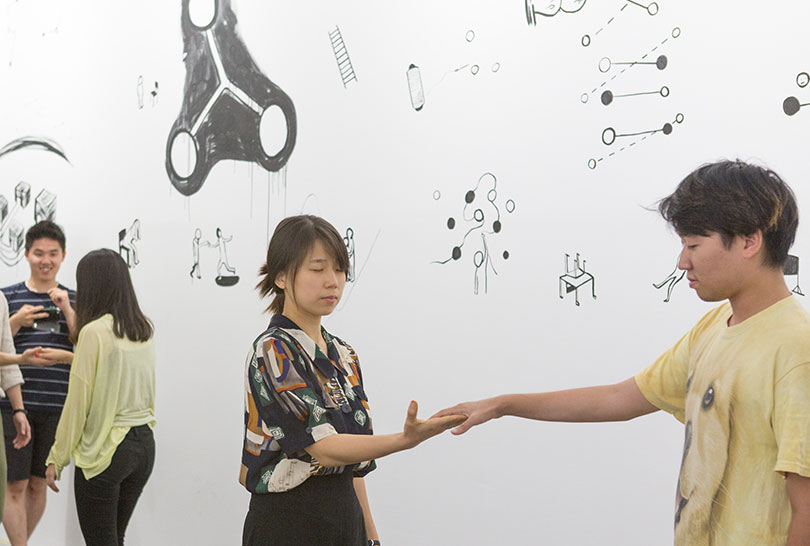
 Above) Taeyoon Choi, ‘Uncertainty School,’ 2016, education program, SeMA Biennale Mediacity Seoul 2016.
Above) Taeyoon Choi, ‘Uncertainty School,’ 2016, education program, SeMA Biennale Mediacity Seoul 2016.Below) Sara Hendren and Alice Sheppard at the Seminar 3, ‘Ramp and Accessibility Mapping’, SeMA Biennale Mediacity Seoul 2016.
Intervention in cities, which you employed frequently in your early work, is less prominent in your recent artwork and projects. While you seem to be holding on to your interest in cities, it appears to have been largely replaced by contemplation and exploration of technology.
It is true that compared with my work from the 2000s, when I playfully intervened in public spaces, leading walking tours and operating urban games using cellular phones, my recent work does not overtly show an intervention in urban spaces. After participating in the ‘Occupy Wall Street’ movement, I felt the limitations of Situationist subversion. I felt that there was little I could change directly by working within urban spaces. Creating a symbolic moment by temporarily intervening in a public space is important. However, sustaining an action and continuing a practice is more important. I became increasingly interested in the relationship between cities and technology.
The operation of an urban space is not unlike computing. A city is a giant computer. A space is created based on repetitions and abstract algorithms. If an individual can build an [open-source] computer, one citizen can create a new public space. I have continued interest in this study as a criticism of and an alternative to capitalism. Because the city is the largest capitalist machine, a more realistic intervention seems necessary.
Recently, I came to rethink my approach to cities while working with people with disabilities, and minorities. I feel that there is much that I can do in the city with regard to disabilities. In the summer of 2016, as part of ‘Uncertainty School,’ Sara Hendren, Alice Sheppard and I led a workshop on mapping wheelchair accessibility in public spaces. Teachers and students of Nodl Night School, an educational institute for people with disabilities, and choreographer Alice Sheppard, who uses wheelchairs in her work, moved through parks, sidewalks, playgrounds, and other spaces near the Buk Seoul Museum of Art to gain firsthand experience of the accessibility of each space.
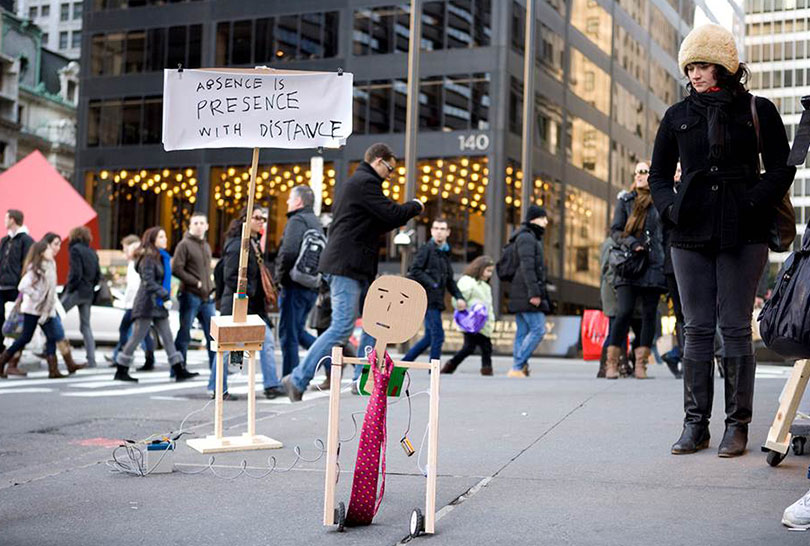 Taeyoon Choi, ‘Automatic Protesters,’ 2011, Electronic circuits and performance.
Taeyoon Choi, ‘Automatic Protesters,’ 2011, Electronic circuits and performance. Your recent work appears to be concerned with disabilities, and a common code that can be shared between people with and without disabilities.
My recent activities begin with a criticism of “othering,” which causes certain individuals to appear alien. A capitalist society dictates a certain standard of normality, and anyone whose means of communication or way of using the body veers from it is considered “other.” But everyone has a physical impairment in one way or another, and everyone will eventually lose one bodily function after another. At this point I would like to cautiously raise a question. Is disability a categorization that oppresses and isolates minorities who are outside the accepted norms of society? Or is disability a form of individuality that includes each person’s abilities and capabilities? Disability has a great many forms, and is unique to each individual, and there is perhaps no correct answer to these questions. This is why it is supremely important for us to ask these tough questions and produce discourse. Uncertainty School was my most meaningful project, in that people with and without disabilities, participants and organizers and collaborating artists, posed these questions and engaged in honest conversations.
Some of the most attractive and interesting friends I have met happened to have disabilities. I wish to have more friends like them. I also hope that they find me accessible. The more opportunities I have to meet a person, the less I see disability and the more I get to know the person. I do not start out with disability as a main subject in my practice. My attempt to form an alternative community that does not other social minorities naturally led to drawing blueprints for a school and museum with few barriers to people with disabilities. Thoughts on accessibility and inclusiveness expanded to the realm of cities. I think that it is unjust to ignore man’s diverse abilities and extensive potential, and create a city only for people without disabilities. I am just beginning. There is much work to do going forward.
The motto of the ‘School of Poetic Computation’ is “More poetry, less demo.” What do you think is “poetic” about technology? What is the reason for your interest in technology as an artist?
I am interested in technology as an artist, because I feel the need to propose new ways of forming relationships with technology. In general, technology is utilized to increase efficiency and productivity, but there is poetic potential in the inherent characteristics of technology. One finds minimalistic beauty looking at a finely crafted machine, and senses a linguistic beauty, like that in poetry, when reading well-written computer code. I am neither ascribing formal beauty to technology, nor making art to praise technology. My interest is in aesthetic expression of the inherent potential of technology. For example, computer coding does not discriminate against people with disabilities. In other words, people with disabilities can write code and use it to communicate with others. I am interested in the point at which technology becomes common language.
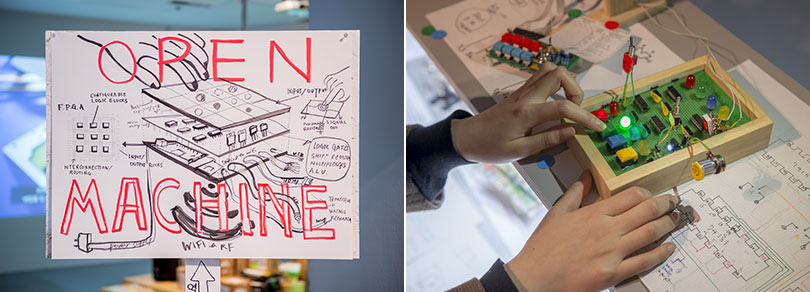 Left) Taeyoon Choi, ‘Open Machine,’ 2015, Drawing on paper.
Left) Taeyoon Choi, ‘Open Machine,’ 2015, Drawing on paper.Right) Taeyoon Choi, ‘Handmade Computer,’ 2015, Electronic circuits and installation.
Often, your work involves reverse engineering, as in ‘Handmade Computer,’ where you trace a technology to its beginning. Observing such work reminds the viewer of a forgotten origin. The viewer might even experience a poetic moment from the work.
‘Handmade Computer’ is like a magnifying glass that brings the interior of technology into view. Many people use computers on a daily basis, but are not interested in how they are made or how they operate. I researched and made notes about the societal and political meaning of binary numbers, logic systems, and other elements that allow a computer to operate. Viewing technology through a magnifying glass stemmed from a yearning to understand the truth about technology. Why did technology develop in a way that we cannot understand? Development of technology does not lead directly to improvement. I do not believe that technology will save us. However, knowing the truth about technology will allow us to make our own choices.
Is there a specific technology that you pay close attention to as an artist? Also, is there a specific technology that you are most concerned about in this period of rapid transformation into an information and technology–based society?
I am interested in decrepit technology. An abandoned flat-screen television on the street or an iPhone with a shattered screen can be most poignant in revealing the relationships among technology, the world, and us. ‘Automatic Protesters,’ ‘Occu-bot and Management-bot’ (2011), made from the motor of an abandoned printer and wood, is an example of what I consider decrepit technology.
There are two kinds of technology that I’m concerned about. I am focused on the much-discussed technologies of artificial intelligence and biotechnology. I am rather uncomfortable with the blind exaltation of artificial intelligence. What is scary is not the algorithms of artificial intelligence, but the people who hide behind the discourse to evade ethical responsibility. Such a cure-all perspective on technology can boil down to fascism. Biotechnology is directly linked to physiology and ecosystems. I feel that there is much to study about environmental problems and much work to be done.
What are your plans for the New Year?
I hope to slow down. I regret having done too much too fast in the past few years. I would like to be slower in going about my work, and to enjoy personal happiness. As an activist, I would like to continue my work with patience.
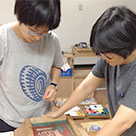
Unmake Lab / Song Soo yon / Choi Binna
Unmake Lab is actively involved in education, research, production, and exhibitions on the subject of technology and society, juxtaposing production, technology, and culture. Unmake Lab’s main interests lie in the political, economic, spatial, and cultural changes that are exposed in the transition to a technology-based society, and what is left out in those changes. It is concentrating its efforts on creating spaces and projects that serve as a platform for technology literacy exchange. Its projects include temporary laboratories, namely Unmake Lab Fest, Yarn Bomb Lab, Mapping Lab: The Mapping Practice for “The City & the City,” Tech Play Lab, and Internet Black Market. Unmake Lab is producing media art and intermediary tools, that have been showcased in various exhibitions and currently researching technological culture in the Cheonggyecheon Stream area, under the theme “Social and Cultural History of Kits. ” For more information, please visit www.unmakelab.org or email.

